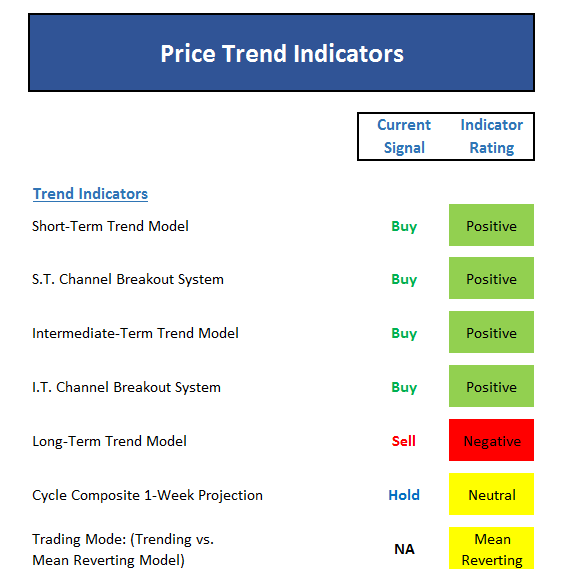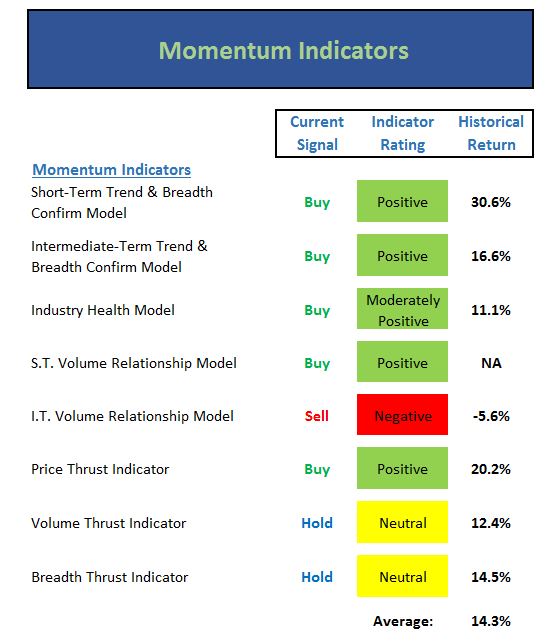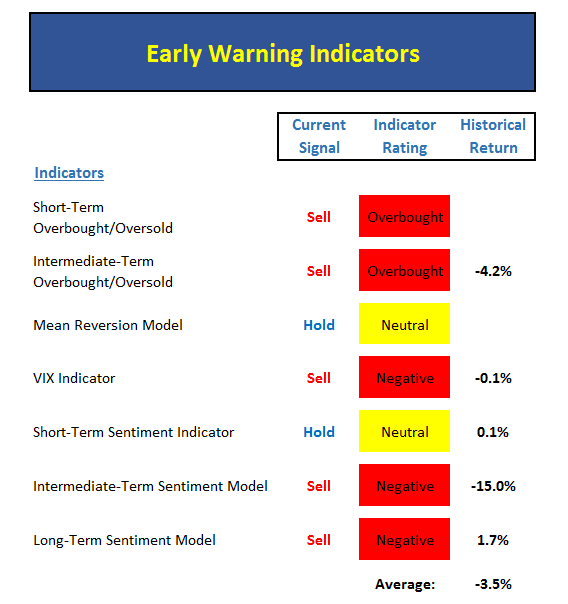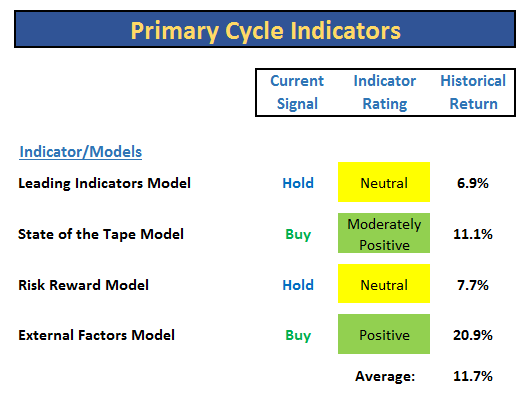Longer-Term Investors Should Be...
Modern times demand modern thinking in portfolio design. Learn more...
With stocks starting to look a little tired and the indices overbought and bumping into key resistance, the bears suggest things are looking a little "toppy" here. Of course, this is a fairly common battle cry from the glass-is-half-empty camp as they rarely see a reason for stocks to move higher.
Even the most ardent bull will likely agree that the bulls could probably use a rest at some point soon as stock prices have run an awfully long way in a very short period of time. And since stocks don't usually move in a straight line for long, it wouldn't be surprising to see a pullback develop and for support to be tested.
However, from a bigger picture perspective, the key question is if the current joyride to the upside represents the start of a new bull market - or - merely another trip through the now expanded trading range that has been with us for the better part of 18 months.
Whenever I'm confronted with such a dilemma, I like to remove emotion, check my ego at the door and run through the key indicator panels. Well, to be honest, I actually run through this exercise on a weekly basis and review most of the trend and momentum indicators each and every day.
The goal is to try and identify the message being delivered from a broad array of indicators. So, let's get started...
We always start with price since as an indicator, price cannot deviate from itself. In other words, it is what it is.

As you can see from the prevailing color of this panel, the trend of the stock market remains positive. However, we will note that the longer-term trend model (which is basically the "death cross" indicator) continues to be negative and the cycle composite is neutral over the coming week.
Next, let's look at the momentum indicators to see if there is any "oomph" behind the move.

With the exception of the long-term volume relationship model, which has been negative for quite some time, the rest of this panel looks pretty good. We will also note that stocks have enjoyed several "breadth thrusts" over the last month and a half, which traditionally has been a good omen for the coming 3, 6, and 12-month time periods. In addition, note that the historical return average of this model set is well above the mean seen since 1900, which stands at around 9.9%.
Next up is the "early warning" set, which is designed to indicate when traders may start to "go the other way" for a trade.

One glance at this group of indicators tells the whole story from a short-term perspective. Stocks are overbought, sentiment is largely negative, and the VIX indicator is waving a warning flag. In short, this panel says things are ripe for a reversal of some sort.
Now let's move on to the market's "external factors" - the indicators designed to tell us the state of the big-picuture market drivers including monetary conditions, the economy, inflation, and valuations.

To summarize this panel, monetary conditions are moderately positive due to rates remaining extremely low, the economy model is moderately positive, the inflation model has improved recently, and valuations are a wash.
Finally, let's turn to our favorite big-picture market models, which are designed to tell us which team is in control of the prevailing major trend.

The good news here is that there is no red to be found on this indicator set. While the "leading indicators" model is currently neutral, it should be noted that the model recently gave a long-term buy signal. And given that this model did a fine job of issuing a warning on May 19, 2015, this is something worth paying attention to.
In addition, our "state of the tape" model (aka my "desert island indicator") has also improved recently. And while this model has been whipped around a bit by the veracity of both the correction/rebound cycle seen since last August, this remains one of the best indicators of the market's health available to us.
Unfortunately, the "risk/reward" model has refused to sing a positive song and remains no better than neutral. However, as you can see from the historical return reading, stocks can advance with the model in the neutral mode.
And finally, there is the "external factors" model, which is a single model summary of monetary, sentiment, valuation and economic indicators. However, unlike our "external factors" panel above, the valuation model focuses on valuations relative to interest rates, which remains positive. As such, this model set is fairly positive.
The Bottom Line
To sum up, our trend and momentum indicators are positive on balance and suggests we should lean bullish here, despite the fact that the early warning models are saying a pullback is very likely in the near-term. And with both the external factor and primary cycle panels looking fairly positive, the bottom line is the weight of the evidence is bullish at this stage.
So, while this is not an all-systems-go environment, longer-term investors should be siding with the bulls and implementing a buy-the-dip approach at this time.
Today's Pre-Game Indicators
Here are the Pre-Market indicators we review each morning before the opening bell...
Major Foreign Markets:
Japan: -2.42%
Hong Kong: -1.57%
Shanghai: +1.45%
London: -1.29%
Germany: -2.32%
France: -2.11%
Italy: -2.35%
Spain: -2.04%
Crude Oil Futures: -$0.18 to $35.52
Gold: +$16.00 at $1235.20
Dollar: lower against the yen, euro and pound
US 10-Year Bond Yield: Currently trading at 1.721%
German 10-Year Bund Yield: Currently trading at 0.097%
Stock Indices in U.S. (relative to fair value):
S&P 500: -19.00
Dow Jones Industrial Average: -133
NASDAQ Composite: -39.60
Thought For The Day:
The eye sees only what the mind is prepared to comprehend. - Henri Bergson
Here's wishing you green screens and all the best for a great day,

David D. Moenning
Founder: Heritage Capital Research
Chief Investment Officer: Sowell Management Services
Looking for More on the State of the Markets?
Current Market Drivers
We strive to identify the driving forces behind the market action on a daily basis. The thinking is that if we can both identify and understand why stocks are doing what they are doing on a short-term basis; we are not likely to be surprised/blind-sided by a big move. Listed below are what we believe to be the driving forces of the current market (Listed in order of importance).
1. The State of the Oil Crisis
2. The State of Global Central Bank Policy
3. The State of the Stock Market Valuations
4. The State of Global Growth
The State of the Trend
We believe it is important to analyze the market using multiple time-frames. We define short-term as 3 days to 3 weeks, intermediate-term as 3 weeks to 6 months, and long-term as 6 months or more. Below are our current ratings of the three primary trends:
Short-Term Trend (1 - 3 Weeks): Positive
(Chart below is S&P 500 daily over past 1 month)
Intermediate-Term Trend (1 - 6 Months): Moderately Positive
(Chart below is S&P 500 daily over past 6 months)
Long-Term Trend (6 - 18 Months): Neutral
(Chart below is S&P 500 daily over past 2 years)
Key Technical Areas:
Traders as well as computerized algorithms are generally keenly aware of the important technical levels on the charts from a short-term basis. Below are the levels we deem important to watch today:
- Key Near-Term Support Zone(s) for S&P 500: 2050(ish)
- Key Near-Term Resistance Zone(s): 2080-2135
The State of the Tape
Momentum indicators are designed to tell us about the technical health of a trend - I.E. if there is any "oomph" behind the move. Below are a handful of our favorite indicators relating to the market's "mo"...
- Trend and Breadth Confirmation Indicator (Short-Term): Positive
- Price Thrust Indicator: Positive
- Volume Thrust Indicator(NASDAQ): Neutral
- Breadth Thrust Indicator (NASDAQ): Moderately Positive
- Short-Term Volume Relationship: Positive
- Technical Health of 100+ Industry Groups: Moderately Positive
The Early Warning Indicators
Markets travel in cycles. Thus we must constantly be on the lookout for changes in the direction of the trend. Looking at market sentiment and the overbought/sold conditions can provide "early warning signs" that a trend change may be near.
- S&P 500 Overbought/Oversold Conditions:
- Short-Term: Overbought
- Intermediate-Term: Overbought - Market Sentiment: Our primary sentiment model is Neutral
The State of the Market Environment
One of the keys to long-term success in the stock market is stay in tune with the market's "big picture" environment in terms of risk versus reward.
- Weekly Market Environment Model Reading: Moderately Positive
Indicator Explanations
Trend and Breadth Confirmation Indicator (Short-Term) Explained: History shows the most reliable market moves tend to occur when the breadth indices are in gear with the major market averages. When the breadth measures diverge, investors should take note that a trend reversal may be at hand. This indicator incorporates an All-Cap Dollar Weighted Equity Series and A/D Line. From 1998, when the A/D line is above its 5-day smoothing and the All-Cap Equal Weighted Equity Series is above its 25-day smoothing, the equity index has gained at a rate of +32.5% per year. When one of the indicators is above its smoothing, the equity index has gained at a rate of +13.3% per year. And when both are below, the equity index has lost +23.6% per year.
Price Thrust Indicator Explained: This indicator measures the 3-day rate of change of the Value Line Composite relative to the standard deviation of the 30-day average. When the Value Line's 3-day rate of change have moved above 0.5 standard deviation of the 30-day average ROC, a "thrust" occurs and since 2000, the Value Line Composite has gained ground at a rate of +20.6% per year. When the indicator is below 0.5 standard deviation of the 30-day, the Value Line has lost ground at a rate of -10.0% per year. And when neutral, the Value Line has gained at a rate of +5.9% per year.
Volume Thrust Indicator Explained: This indicator uses NASDAQ volume data to indicate bullish and bearish conditions for the NASDAQ Composite Index. The indicator plots the ratio of the 10-day total of NASDAQ daily advancing volume (i.e., the total volume traded in stocks which rose in price each day) to the 10-day total of daily declining volume (volume traded in stocks which fell each day). This ratio indicates when advancing stocks are attracting the majority of the volume (readings above 1.0) and when declining stocks are seeing the heaviest trading (readings below 1.0). This indicator thus supports the case that a rising market supported by heavier volume in the advancing issues tends to be the most bullish condition, while a declining market with downside volume dominating confirms bearish conditions. When in a positive mode, the NASDAQ Composite has gained at a rate of +38.3% per year, When neutral, the NASDAQ has gained at a rate of +13.3% per year. And when negative, the NASDAQ has lost at a rate of -8.5% per year.
Breadth Thrust Indicator Explained: This indicator uses the number of NASDAQ-listed stocks advancing and declining to indicate bullish or bearish breadth conditions for the NASDAQ Composite. The indicator plots the ratio of the 10-day total of the number of stocks rising on the NASDAQ each day to the 10-day total of the number of stocks declining each day. Using 10-day totals smooths the random daily fluctuations and gives indications on an intermediate-term basis. As expected, the NASDAQ Composite performs much better when the 10-day A/D ratio is high (strong breadth) and worse when the indicator is in its lower mode (weak breadth). The most bullish conditions for the NASDAQ when the 10-day A/D indicator is not only high, but has recently posted an extreme high reading and thus indicated a thrust of upside momentum. Bearish conditions are confirmed when the indicator is low and has recently signaled a downside breadth thrust. In positive mode, the NASDAQ has gained at a rate of +22.1% per year since 1981. In a neutral mode, the NASDAQ has gained at a rate of +14.5% per year. And when in a negative mode, the NASDAQ has lost at a rate of -6.4% per year.
Bull/Bear Volume Relationship Explained: This indicator plots both "supply" and "demand" volume lines. When the Demand Volume line is above the Supply Volume line, the indicator is bullish. From 1981, the stock market has gained at an average annual rate of +11.7% per year when in a bullish mode. When the Demand Volume line is below the Supply Volume line, the indicator is bearish. When the indicator has been bearish, the market has lost ground at a rate of -6.1% per year.
Technical Health of 100 Industry Groups Explained: Designed to provide a reading on the technical health of the overall market, this indicator takes the technical temperature of more than 100 industry sectors each week. Looking back to early 1980, when the model is rated as "positive," the S&P has averaged returns in excess of 23% per year. When the model carries a "neutral" reading, the S&P has returned over 11% per year. But when the model is rated "negative," stocks fall by more than -13% a year on average.
Weekly State of the Market Model Reading Explained:Different market environments require different investing strategies. To help us identify the current environment, we look to our longer-term State of the Market Model. This model is designed to tell us when risk factors are high, low, or uncertain. In short, this longer-term oriented, weekly model tells us whether the odds favor the bulls, bears, or neither team.
Disclosures
The opinions and forecasts expressed herein are those of Mr. David Moenning and may not actually come to pass. Mr. Moenning's opinions and viewpoints regarding the future of the markets should not be construed as recommendations. The analysis and information in this report is for informational purposes only. No part of the material presented in this report is intended as an investment recommendation or investment advice. Neither the information nor any opinion expressed constitutes a solicitation to purchase or sell securities or any investment program.
Any investment decisions must in all cases be made by the reader or by his or her investment adviser. Do NOT ever purchase any security without doing sufficient research. There is no guarantee that the investment objectives outlined will actually come to pass. All opinions expressed herein are subject to change without notice. Neither the editor, employees, nor any of their affiliates shall have any liability for any loss sustained by anyone who has relied on the information provided.
The analysis provided is based on both technical and fundamental research and is provided "as is" without warranty of any kind, either expressed or implied. Although the information contained is derived from sources which are believed to be reliable, they cannot be guaranteed.
David D. Moenning is an investment adviser representative of Sowell Management Services, a registered investment advisor. For a complete description of investment risks, fees and services, review the firm brochure (ADV Part 2) which is available by contacting Sowell. Sowell is not registered as a broker-dealer.
Employees and affiliates of Sowell may at times have positions in the securities referred to and may make purchases or sales of these securities while publications are in circulation. Positions may change at any time.
Investments in equities carry an inherent element of risk including the potential for significant loss of principal. Past performance is not an indication of future results.
Advisory services are offered through Sowell Management Services.
